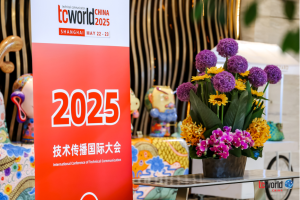Disclaimer: This document pertains to relevant international technical regulations and is intended for informational purposes only. Market access and compliance requirements for each region are subject to actual confirmation and operation.

The debate about the value of manual-type documentation has never ceased, let alone the necessity of multilingual translation. As a decision-maker for relevant operations, do you have such concerns in an era of business globalization and the continuous export of products?
Are Manuals Really Necessary?
Before discussing the value of the manuals or the need for translations, we should understand that not all products require a manual. For example, if your business produces light bulbs, manuals are not a necessity as no user needs to consult a manual to understand that bulbs will not glow until screwed into the base and connected with power. On the other hand, if your business produces smart Wi-Fi light bulbs, then manuals become essential as many customers may not understand how to use your product without some form of instruction. The difference lies in whether users require technical knowledge beyond that of common sense to use and operate the product safely and efficiently.
Many countries or international organizations have defined detailed requirements for product information in standards of corresponding products. For example, various European Union (EU) directives require that users have a clear understanding of using a product safely. Therefore, if your company produces smart Wi-Fi light bulbs instead of ordinary light bulbs that generate light when screwed into the base and connected with power, it is not necessary to consider if a product manual would be necessary as they are part of the basic requirements of the EU for product compliance.
Are English Manuals Good Enough?
The answer is no.
International Electrotechnical Commission (IEC) standard 60335-1 for household and similar electrical appliances specifies that such products must include instructions on use and safety in the official language of the target market country.
7.13 Instructions and other text required by this standard shall be written in an official language of the country in which the appliance is to be sold.
Many of the current EU technical directives also clearly require that manuals are translated into the local language. For example, Machinery Directive2 2006/42/EC explicitly states that all instructions for using machinery products must be in the official language of the target market or service area.
1.7.4 Instructions
All machinery must be accompanied by instructions in the official Community language or languages of the Member State in which it is placed on the market and/or put into service.
Though many have the impression that English has a high penetration rate in Europe, the fact is that apart from the UK (withdrew from EU in 2020) and Ireland, Malta is the only country in the EU with English as an official language. Even if we ignore the specific requirements of EU directives, the actual role of English-language materials in European countries is very limited.
In addition to the manual translations required by the mandatory standards of many countries, native-language materials play an equally important role in the marketing process. A 2014 online shopping survey3 was conducted on consumers from major non-English-speaking economies worldwide, including Brazil, China, Egypt, France, Germany, Indonesia, Japan, Spain, and Turkey. The survey found that of 3002 respondents:
- 30% had never shopped on an English-only website.
- 56% preferred websites in their native language or rejected English websites entirely.
- The higher a country’s economic development, the greater its preference for its native language: Up to 83% of Egyptian respondents agree that “the products themselves are more important than information in my native language”, compared to just 56% of German respondents, who expressed the lowest level of agreement.
The use of native-language materials is not simply a requirement for market entry to many countries but also an important factor in attracting consumers in emerging markets and even determining consumer decisions in B2C scenarios.
Risk of Non-Compliance
It can be easily seen that translating product manuals into the official language of a target market not only conforms to the market entry rules of various countries but can also help improve local consumer recognition of the products in question. But what risks would arise if a product manual was not translated?
Countries, especially those with mature regulation mechanisms, have market surveillance authorities (MSA)4 responsible for ensuring the effective implementation of international standards and national laws and regulations for different types of products. The MSA of each country has the right to confirm, on a case-by-case basis and in accordance with its applicable regulations and directives, whether imported products have been properly marked with the required logos, contact information, and complete technical documentation, and impose penalties on those not in compliance. Products at the customs declaration stage may be rejected, confiscated, or even destroyed, while products on shelves may be removed or destroyed. This process and the corresponding economic penalties are determined at the broad discretion of the MSA.
The absence of a native-language manual for products that are already in the sales stage also presents uncertain risks. Article 546 § 15 of the Polish Civil Code stipulates that sellers must provide consumers with clear, understandable, and non-misleading information in Polish to ensure the integrity of the product. Consumers are entitled to consider a product without a Polish manual to be incomplete and lodge a complaint. Suppose the supplier does not respond within the specified time limit. In that case, the MSA will determine that the supplier has violated regulations and requires re-issue a complete product (with a Polish manual) or refund the full amount. Should a product lack a Polish manual, the MSA has the right to require the product to be immediately pulled from shelves and may issue a fine of up to PLN 5,000 (approximately USD 1,330).
Recently, the Dutch Data Protection Authority (DPA) has imposed a fine of €750,000 on TikTok for violating the privacy rights of children6. The reason is that many TikTok users in the Netherland are children that may not be able to read and understand the privacy statement in English when installing and using the app. Therefore, by not offering the privacy statement in Dutch, TikTok failed to adequately explain how the app collects, processes,, and uses personal data, which violated the General Data Protection Regulation (GDPR).
Conclusion
The variation in product categories, national directives and regulations, and the huge differences in market environments between different countries and regions, an untranslated manual may not necessarily lead to the corresponding product being judged as non-compliant by the MSA in the target market or lead to consumer complaints. However, products that are judged to be non-compliant may be hindered in customs, lead to the delay of sales plans, or even to direct removal from shelves and the levying of fines. As such, the consideration and preparation of materials in advance can not only ensure products better match consumers’ native-language preferences. Still, they can also effectively avoid the risk of non-compliance during the import/export process.
Get in touch
Request a quote or connect with our team to learn more about Maxsun’s language services.
Ref:
- IEC 60335-1:2020 Household and similar electrical appliances – Safety – Part 1: General Requirements: https://webstore.iec.ch/publication/61880
- EU Machinery Directive 2006/42/EC: https://eur-lex.europa.eu/legal-content/EN/TXT/PDF/?uri=CELEX:32006L0042&rid=6
- CSA Online Shopping Language Preference Survey: https://csa-research.com/More/Media/Press-Releases/ArticleID/31/Survey-of-3-000-Online-Shoppers-Across-10-Countries-Finds-that-60-Rarely-or-Never-Buy-from-English-only-Websites
- MSA List: https://ec.europa.eu/docsroom/documents/45526/attachments/1/translations/en/renditions/native
- Polish Civil Code: https://isap.sejm.gov.pl/isap.nsf/download.xsp/WDU19640160093/U/D19640093Lj.pdf
- TikTok fined for violating children’s privacy (DPA): https://autoriteitpersoonsgegevens.nl/en/news/tiktok-fined-violating-children%E2%80%99s-privacy
Appendix: Official Languages of EU and EFTA Countries
| No. | European Union (EU) Member States | Official Language |
| 1 | Austria | German |
| 2 | Belgium | German, French, Dutch |
| 3 | Bulgaria | Bulgarian |
| 4 | Cyprus | Greek |
| 5 | Czech Republic | Czech |
| 6 | Denmark | Danish |
| 7 | Estonia | Estonian |
| 8 | Finland | Finnish, Swedish |
| 9 | France | French |
| 10 | Germany | German |
| 11 | Greece | Greek |
| 12 | Ireland | English, Irish |
| 13 | Italy | Italian |
| 14 | Latvia | Latvian |
| 15 | Lithuania | Lithuanian |
| 16 | Luxembourg | French, German |
| 17 | Malta | Maltese, English |
| 18 | Netherlands | Dutch |
| 19 | Poland | Polish |
| 20 | Portugal | Portuguese |
| 21 | Romania | Romanian |
| 22 | Slovakia | Slovak |
| 23 | Slovenia | Slovenian |
| 24 | Spain | Spanish |
| 25 | Sweden | Swedish |
| 26 | United Kingdom (Withdrew from EU in 2020) | English |
| 27 | Croatia | Croatian |
| European Free Trade Association (EFTA) Member States | Official Language | |
| 28 | Norway | Norwegian |
| 29 | Iceland | Icelandic |
| 30 | Lichtenstein | German |
| 31 | Switzerland | German, French, Italian |




![[Regulatory Update] Egypt Imposes New Certification Rules for Manual Translations [Regulatory Update] Egypt Imposes New Certification Rules for Manual Translations](https://maxsuntranslation.com/wp-content/uploads/2025/06/Egypt-Imposes-New-Certification-Rules-for-Manual-Translations-1-300x109.png)

